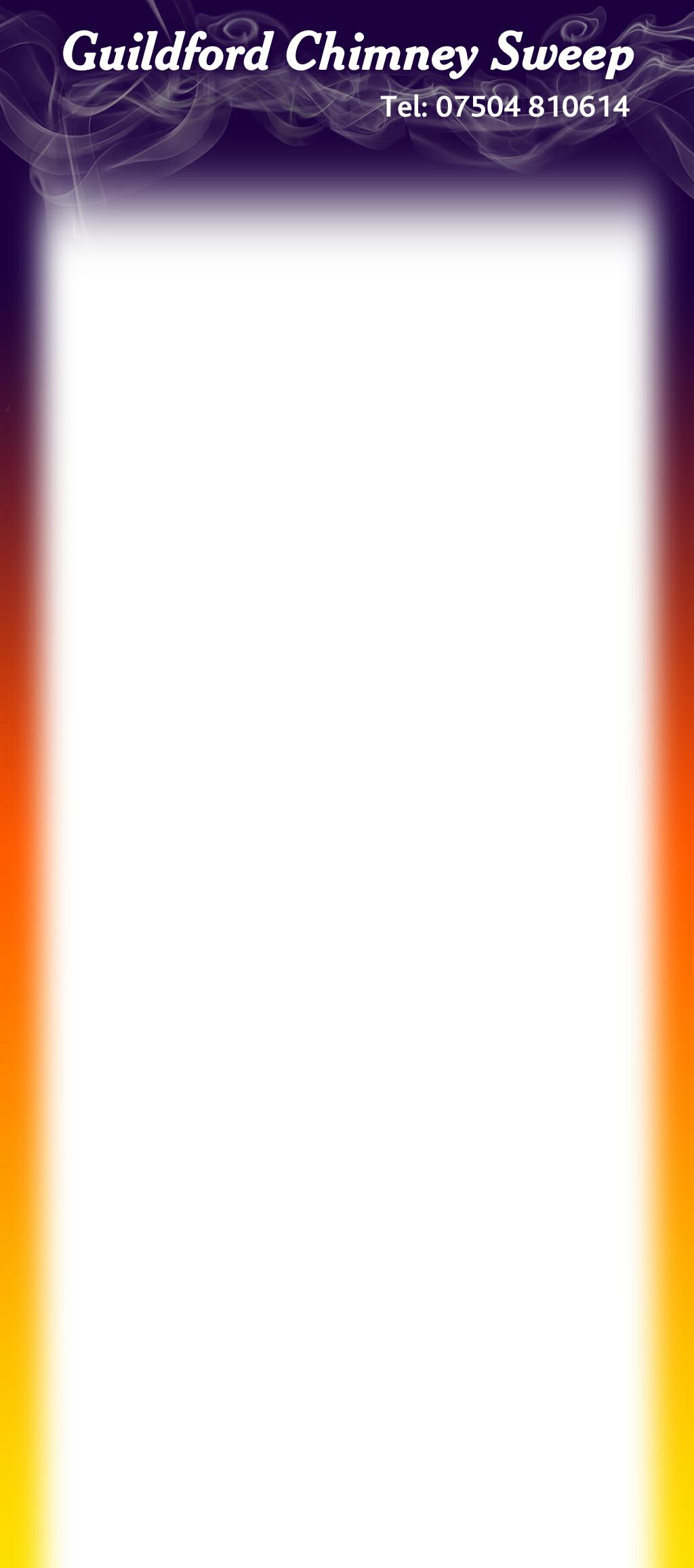
Chimney Information
Chimney Terminology
Flue -  The flue is the passageway in a chimney through which all the combustion gases (smoke/fumes) are
The flue is the passageway in a chimney through which all the combustion gases (smoke/fumes) are 


 removed from the fire to the outside of the building. The minimum height for a flue serving solid fuel
removed from the fire to the outside of the building. The minimum height for a flue serving solid fuel 




 appliances is 4.5 metres or 15 feet, to create enough up draught.
appliances is 4.5 metres or 15 feet, to create enough up draught.
Flue Pipe -  A flue pipe is a metal pipe, used to connect a fire or appliance to a chimney flue.
A flue pipe is a metal pipe, used to connect a fire or appliance to a chimney flue.
Flue Liner -  The flue liner is the material used to “line” the flue within the chimney. Flue liners can be of fire clay,
The flue liner is the material used to “line” the flue within the chimney. Flue liners can be of fire clay, 


 refractory quality concrete or metal (usually high grade stainless steel).
refractory quality concrete or metal (usually high grade stainless steel).
Chimney -  A chimney is the structure surrounding one or more individual flues.
A chimney is the structure surrounding one or more individual flues.
Mid-Feathers - Mid-feathers are the dividing structure separating the flues in a chimneystack
Chimney stack - A chimney stack is the structure in which a number of flues are contained (part of it is visible on top of 



 the building surmounted by chimney pots)
the building surmounted by chimney pots)
The Role of the Flue.
For most solid fuel fires (wood, coal, and even smokeless fuels) the flue has two tasks to perform:
1) To carry the products of the burning fuel from the fireplace, and to release them through the chimney pot.
2) To generate a flow of air through or over the burning fire to provide sufficient oxygen for the efficient combustion 

 of the fuel.
of the fuel.
How the flue works.
The up-draught in a flue is due to a combination of the height of the flue and the difference in temperature between the flue and its gases and the outside air. The warmer and taller the flue the more efficient it will be A flue is essentially a column of hot air or gases, which being lighter than a corresponding column of cold air outside of a building wishes to rise vertically. To illustrate, picture a bonfire on a still day. The smoke naturally forms into a vertical rising column above the fire, thus it forms an invisible flue. But as it cools to the temperature of the surrounding air it begins to dissolve. This illustration of a bonfire and its column of smoke provide two important lessons for the best operation of any chimney:
1. Smoke wants to rise vertically; therefore any bends or sloping sections in a flue are going to slow down the flow of smoke from the fireplace or appliance.
A flue is best if it goes straight up. If any bend is needed, it should be as near shallow in angle as possible. 30 degrees from the vertical is the ideal. Bends of 45 degrees are in the main too steep, although they are allowed.
2. The smoke will rise while it is hotter than the surrounding air. The greater the temperature difference, the faster the smoke will rise. Flues should ideally be lined with an insulating material to keep the gases hot this will increase the pull of the flue and the removal of smoke from the fireplace or appliance.
Email : Info@GuildfordChimneySweep.com